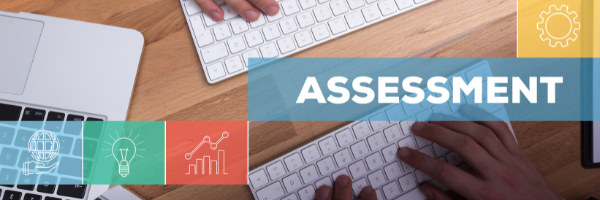Preparing for the Future of Work?
A Training Needs Assessment Will Help
Across the board, industry research predicts that the future of work will see a drastic shift in how employers approach the employee experience. Beyond improving the bottom line and meeting other business objectives, successful organizations of the future will put people first.

To cope with disruptions such as the pandemic, digital transformation, and inflation, organizations anticipating the future of work are:
-
Embracing hybrid and fully remote work environments, leveraging the resources and tools to support remote employees.
-
Establishing a healthy workplace culture and offering employees well-being programs.
-
Prioritizing sustainability and equity practices such as diversity and inclusion (DEI) and environmental, social, and corporate governance (ESG).
-
Investing in continuous learning and development programs that fill skills shortages and attract talent.
Many progressive organizations use a training needs assessment to make smarter training program investments that align with the future of work. When done effectively, a training needs assessment helps organizations design learning programs that improve the employee experience. This can decrease turnover, foster a strong workplace culture, and improve employee engagement and productivity.
What is a training needs assessment and how can it help your business prepare for the future of work?
A training needs analysis or assessment (TNA) is used to evaluate an organization’s performance requirements and identify the skills needed to fulfill those requirements. The goal of a training needs analysis is to plan and deliver training programs that address skills gaps. Assessments help companies understand who needs training and why skills are missing in the first place. They can also identify how to align employee skills with overall business goals and increase training ROI through programs that improve employee engagement and learning.
Training needs analyses are led by a senior learning expert(s) and typically involve leadership, managers, and employees of a company. These individuals work together to identify the goals of an assessment, create an assessment strategy, and use the data gathered to plan a training program. An assessment can be geared around a specific team or function—such as how a sales team is performing—or more generally to evaluate a business’s performance.
Assessments are valuable when organizations experience a significant change, such as a merger or new software adoption. Considering how quickly workforce demands are changing, training needs analyses can also help your organization prepare for the future of work.
Preparing for the future of work: how a training needs analysis can help
1. Align training programs with future business objectives
Some organizations invest in learning and development initiatives without first investigating how the training program addresses business goals. This can lead to unmet performance targets, impact your bottom line, and reduce your training ROI. If your organization is anticipating the future of work, it’s likely to consider what skills are needed to improve the employee experience and integrate other expected changes—such as increased digital transformation. A training needs assessment will help you build learning programs that are focused on the strategy and goals of the company.
2. Grow a strong workplace culture
A competitive hiring market, high turnover, and increasingly remote workers are prompting organizations to rethink their workplace culture in a post-pandemic world. Training needs assessments aren’t just for identifying performance goals and skills gaps for everyday tasks. They can also help your organization evaluate the state of its culture and identify what competencies are required to improve it. For example, you might use a training needs assessment to evaluate the role of your HR department in workplace culture and determine which skills or initiatives can meet your workplace culture goals.
3. Develop skills for remote work environments
The transition to remote work was swift, and many organizations are still catching up to the change. Industry experts agree that accommodating flexible, hybrid, and remote work environments are the future of work—especially considering that inflexible work arrangements are one of the top reasons that employees left their job in 2021. A training needs assessment is useful for understanding what skills and tools your organization needs for more efficient and engaging remote work processes.
4. Adapt quickly to emerging technologies
From facilitating more collaborative remote workforces to leveraging data for business decisions, forward-thinking organizations are adopting technologies to get ahead. However, your company won’t benefit from new software and other innovations if your workforce can’t use them effectively. According to research by PwC, only half of the employees across a range of industries worldwide agree that leadership considers their needs when introducing new technology. A training needs assessment will help you identify not only the types of technologies that your business will benefit from but also the skills your employees need to use them optimally.
5. Establish training programs that attract and retain talent
Industry research suggests that the Great Resignation—a term used to describe a spike in employee turnover since 2020—is not over, with 20% of workers planning to quit in 2023. Research from Employ also shows that learning and development opportunities are a top consideration for job seekers. Training needs assessments are crucial for developing engaging learning opportunities that support employee growth. This is why assessments are valuable for both retaining employees and attracting external talent.
The bottom line
Since 2020, the pandemic has revolutionized the way employees think about and approach their jobs. Organizations need to adapt to new employee demands, creating more flexible environments that put people first. Training needs assessments have always enabled more effective training programs—and now they can help organizations build a culture and talent pool that will successfully navigate the future of work.
If you found this blog helpful and want to learn more,
be sure to download our FREE Tools:
3 tools for an effective training needs assessments
Download now!


